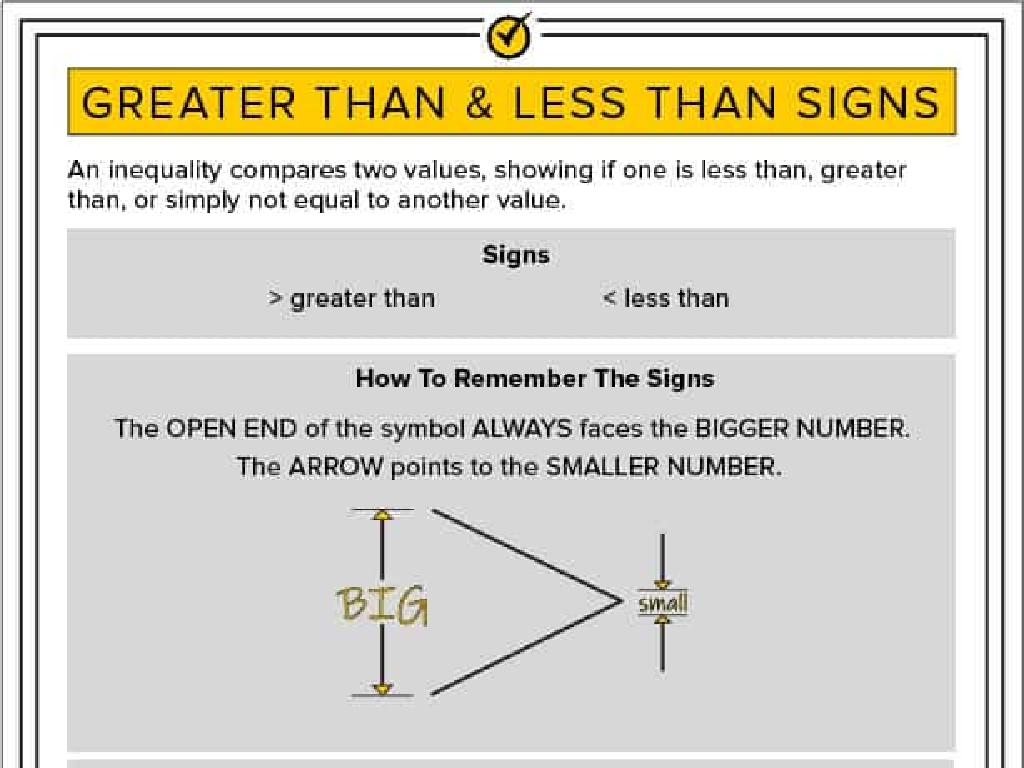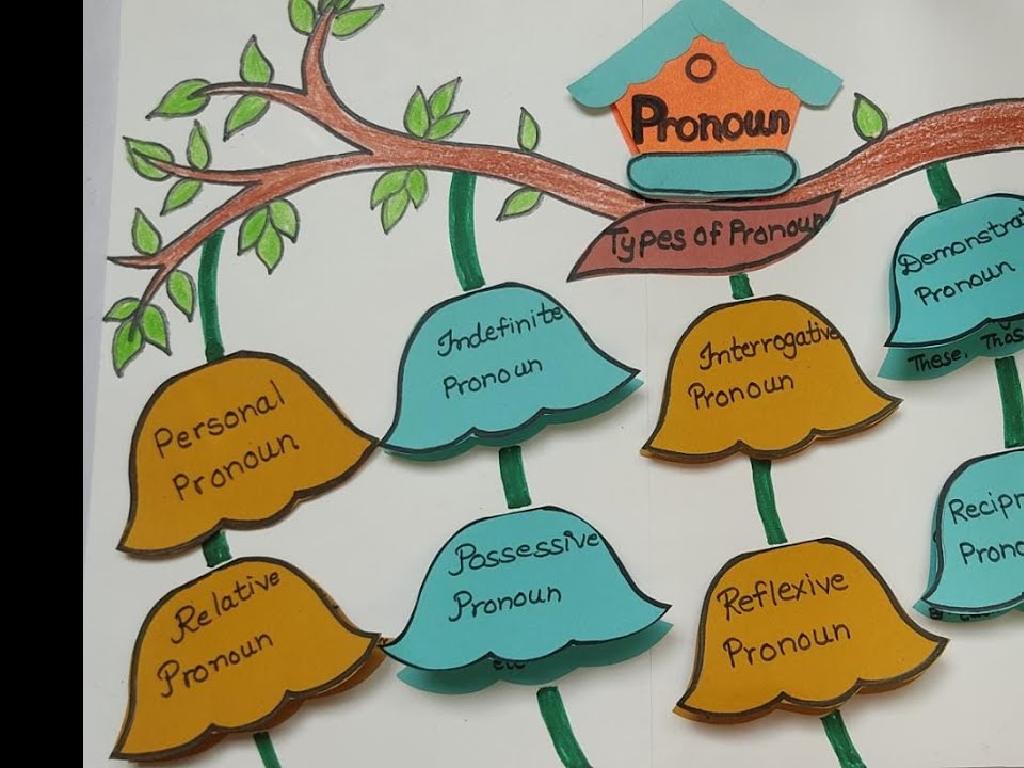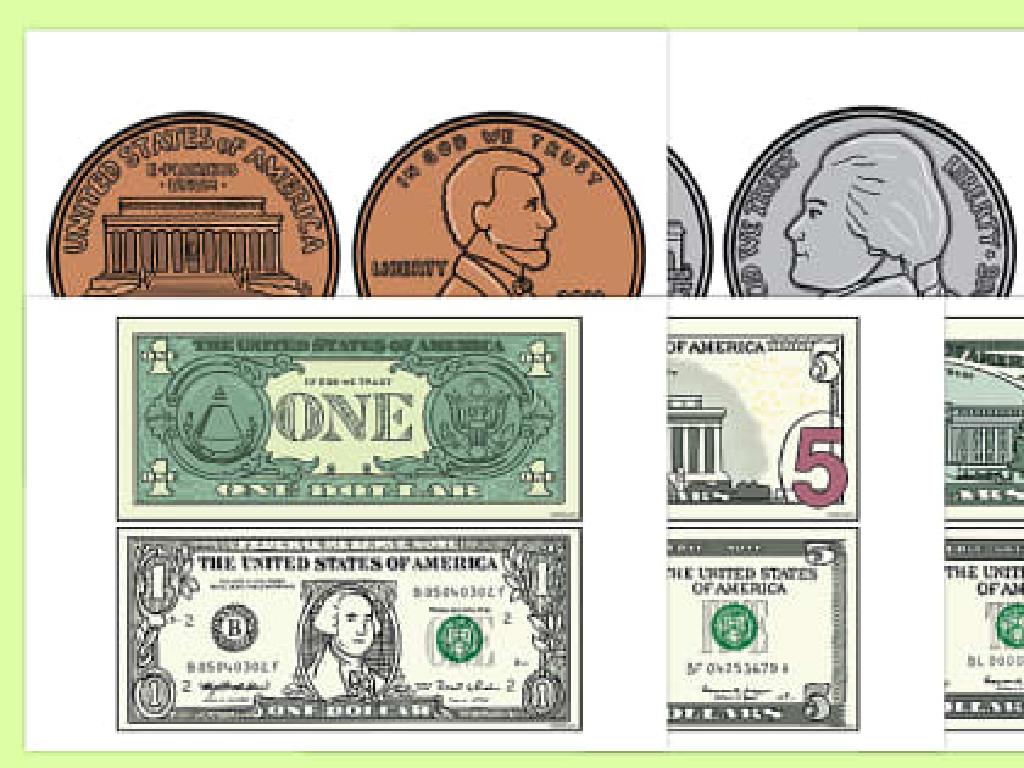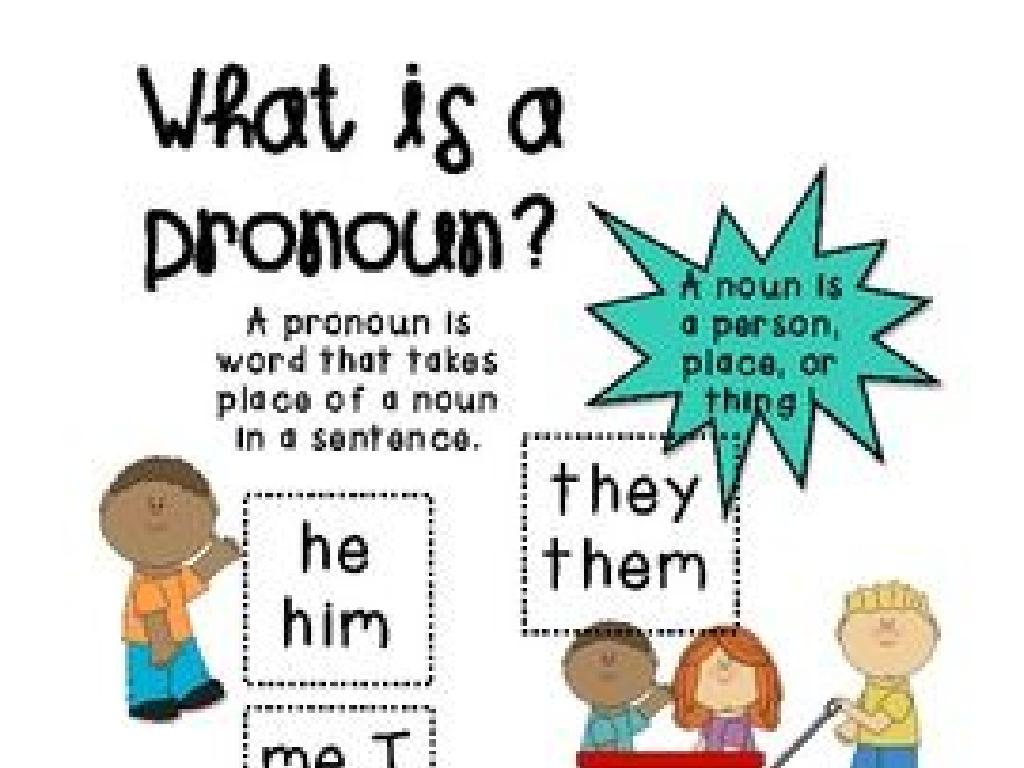Identify Chemical Formulas For Ball-And-Stick Models
Subject: Science
Grade: Eighth grade
Topic: Atoms And Molecules
Please LOG IN to download the presentation. Access is available to registered users only.
View More Content
Atoms and Molecules: Ball-and-Stick Models
– Atoms: Matter’s building blocks
– Atoms are the smallest units of matter, consisting of protons, neutrons, and electrons.
– Molecules: Atoms bonded together
– Molecules form when two or more atoms bond chemically.
– Ball-and-stick models represent molecules
– Balls represent atoms; sticks represent bonds in these 3D models.
– Deciphering chemical formulas
– Chemical formulas show the types and numbers of atoms in a molecule.
|
This slide introduces the concept of atoms and molecules and how they can be visually represented through ball-and-stick models. Begin by explaining that atoms are the fundamental units of matter, which combine in various ways to form molecules. Emphasize the importance of understanding how atoms bond to form molecules, as this is key in many scientific fields. Ball-and-stick models are a useful tool for visualizing the structure of molecules and identifying their chemical formulas. Encourage students to look at these models as a way to understand the composition of substances at the molecular level. Provide examples of simple molecules and their corresponding ball-and-stick models to illustrate how to interpret chemical formulas from these representations.
Atoms: Building Blocks of Matter
– Atoms: Smallest unit of elements
– Atoms are indivisible in chemical processes
– Composed of protons, neutrons, electrons
– Core (nucleus) has protons (+) and neutrons (0), electrons (-) orbit nucleus
– Foundation of all matter
– Everything around us is made of atoms
– Basis for chemical formulas
– Understanding atoms is key to identifying chemical formulas in models
|
This slide introduces the concept of atoms as the fundamental units of matter, which are essential for understanding chemical formulas in ball-and-stick models. Emphasize that atoms consist of a central nucleus made up of protons and neutrons, with electrons orbiting this nucleus. Highlight that all matter is composed of atoms, making them incredibly important in the study of chemistry and physics. Ensure students grasp that knowing the structure of atoms allows us to decipher chemical formulas and visualize them with ball-and-stick models, which will be the focus of subsequent lessons.
Understanding Molecules in Chemistry
– Molecules: bonded atoms
When two or more atoms join, they form a molecule, like H2O.
– Simple molecule examples
H2O (water), O2 (oxygen), CO2 (carbon dioxide) are common molecules.
– Molecules in ball-and-stick models
Ball-and-stick models visually represent the structure of molecules.
– Recognizing chemical formulas
Chemical formulas tell us the types and numbers of atoms in a molecule.
|
This slide introduces the concept of molecules to students, explaining that they are formed by the bonding of two or more atoms. Use everyday examples like water (H2O), oxygen (O2), and carbon dioxide (CO2) to illustrate simple molecules. Explain how ball-and-stick models are used to represent the three-dimensional structure of molecules, with balls representing atoms and sticks as bonds. Emphasize the importance of chemical formulas in identifying the composition of molecules. Encourage students to practice by identifying the number of atoms in various chemical formulas and constructing ball-and-stick models for a hands-on understanding.
Understanding Chemical Formulas
– Chemical formulas: atom types & numbers
– Example: H2O – 2 Hydrogen, 1 Oxygen
– H2O: 2 balls for H, 1 larger ball for O
– Representing molecules in formulas
– Each element has a unique symbol; numbers indicate quantity
– Deciphering formulas for ball-and-stick models
– Use formulas to build ball-and-stick models, visualizing molecules
|
This slide introduces the concept of chemical formulas as a way to represent molecules. Emphasize that chemical formulas are like a recipe for molecules, showing which atoms are involved and in what quantity. Use water (H2O) as a clear example, explaining that the ‘2’ indicates two hydrogen atoms and the ‘O’ represents one oxygen atom. Highlight the importance of understanding these formulas to create accurate ball-and-stick models, which help visualize the structure of molecules. Encourage students to practice by writing chemical formulas for common compounds and building their corresponding models.
Understanding Ball-and-Stick Models
– Visualizing molecular structures
– Balls symbolize atoms
– Each ball color represents a different element
– Sticks denote chemical bonds
– Stick length and color indicate bond type and strength
– Deciphering chemical formulas
– Use models to identify molecular composition
|
This slide introduces students to the concept of ball-and-stick models as a way to visualize molecular structures in three dimensions. Emphasize that the balls represent atoms and come in different colors to signify different elements, while the sticks represent the chemical bonds between these atoms. The length and color of the sticks can provide information about the type of bond and its strength. Encourage students to use these models to understand how atoms bond together to form molecules and how to identify the chemical formula of a molecule by looking at the number and arrangement of balls (atoms) in the model. This will help them grasp the basics of molecular composition and the visual interpretation of chemical formulas.
Identifying Chemical Formulas in Ball-and-Stick Models
– Ball colors represent elements
– Each color matches a specific chemical element, like red for oxygen.
– Sticks indicate atom bonds
– The count of sticks connected to a ball shows how many other atoms it bonds with.
– Deciphering molecule structure
– Analyze how balls and sticks form the shape of the molecule.
– Practice with common compounds
– Use water (H2O) and carbon dioxide (CO2) as examples to identify.
|
This slide introduces students to the concept of using ball-and-stick models to identify chemical formulas. Each ball in the model represents an atom of a different element, with distinct colors for clarity. The sticks between the balls represent chemical bonds, and the number of sticks connected to a ball indicates how many bonds that atom can form. Students should learn to interpret these models to understand the structure of molecules. Encourage them to practice by identifying the formulas of common compounds, such as water and carbon dioxide, by counting the balls and sticks and relating them to the respective elements and bonds.
Deciphering Chemical Formulas from Models
– Identify elements by color in models
– Each color in a ball-and-stick model represents a different element, like white for hydrogen, black for carbon.
– Count atoms of each element
– Tally up how many balls (atoms) there are for each color (element).
– Write the chemical formula
– Use your counts to form the chemical formula, e.g., H2O for 2 white (hydrogen) and 1 red (oxygen).
– Practice with different models
|
This slide is aimed at helping students practice identifying chemical formulas from ball-and-stick models. Begin by explaining that each color in the model represents a different element. Provide a color key for common elements. Then, guide students on how to count the number of each type of atom represented by the colored balls. Next, demonstrate how to translate this count into a chemical formula, emphasizing the importance of writing the correct subscript numbers to reflect the count of atoms. Encourage students to practice with a variety of models to solidify their understanding. As an activity, students can work in groups to identify elements, count atoms, and write chemical formulas for given models.
Class Activity: Build and Identify Molecules
– Build a molecule using a model kit
– Determine the molecule’s chemical formula
– Count atoms of each element, then write the formula
– Share your model with the class
– Discuss the importance of molecular structure
– Understanding structure helps explain properties and reactions
|
This activity is designed to help students visualize molecular structures and understand chemical formulas. Provide each student or group with a model kit containing various balls representing different atoms and sticks for bonds. Guide them to connect these to form a molecule. Once built, students should count the number of each type of atom present and write the chemical formula accordingly. Encourage them to share their models with the class to foster a collaborative learning environment. Discuss how the molecular structure can affect the properties and reactions of the substance. Possible molecules to build could include water (H2O), carbon dioxide (CO2), methane (CH4), or simple organic compounds. This hands-on experience reinforces the connection between molecular structure and chemical formulas.
Review and Q&A: Chemical Formulas and Models
– Recap: Ball-and-stick models
– Chemical formula representation
– How elements are depicted and connected in models
– Q&A session
– Ask any questions about today’s lesson
– Encourage curiosity and participation
– No question is too small, every query is welcome
|
This slide is aimed at reviewing the key concepts of identifying chemical formulas through ball-and-stick models. Start by summarizing how these models represent atoms as balls and bonds as sticks, and how they visually depict the structure of molecules. Explain how chemical formulas are derived from these models, emphasizing the importance of understanding the visual-to-symbolic translation. Open the floor for a Q&A session, encouraging students to ask questions to clarify their understanding. It’s crucial to foster an environment where students feel comfortable expressing their curiosity. The teacher should be prepared to answer questions or demonstrate concepts using additional models or examples if necessary. This interactive session will help solidify the students’ grasp of the lesson’s material.
Homework: Ball-and-Stick Models
– Create 3 ball-and-stick models
– Write their chemical formulas
– Example: H2O for water, CO2 for carbon dioxide
– Present one model in class
– Understand molecule structure
– Visualize how atoms bond in molecules
|
This homework assignment is designed to reinforce the concept of molecular structure and chemical formulas. Students are tasked with creating three different ball-and-stick models, which are physical representations of molecules showing the arrangement of atoms. They must identify and write down the chemical formulas for each model, such as H2O for water, where ‘H’ represents Hydrogen and ‘O’ represents Oxygen, and the numbers indicate the quantity of each atom. In the following class, students will have the opportunity to present one of their models, explaining the structure and the corresponding chemical formula. This exercise will help students visualize molecular composition and understand how individual atoms bond to form molecules. The teacher should prepare to guide students through the presentation process, ensuring they can explain their models clearly.






